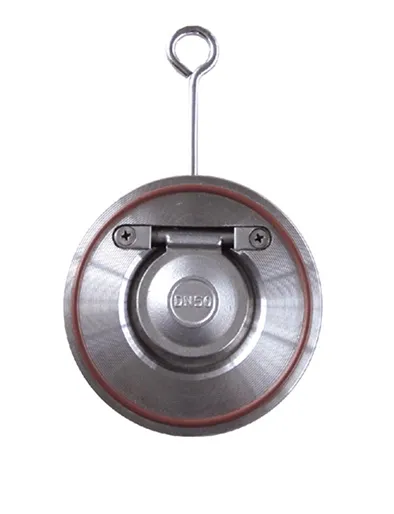Nov . 11, 2024 22:03 Back to list
check valve with counterweight
Understanding Check Valves with Counterweights Functionality and Applications
Check valves are essential components in fluid systems, designed to prevent backflow and ensure that fluids move in one direction. Among the various types of check valves, the version incorporating counterweights offers specific advantages, making it particularly useful in certain applications. This article delves into the functionality, construction, and applications of check valves with counterweights.
What is a Check Valve?
A check valve is a device that allows fluid (liquid or gas) to flow in only one direction. It is vital in systems where backflow can lead to contamination, damage, or operational inefficiencies. Traditional check valves use a spring mechanism or gravity to close, but incorporating a counterweight can enhance performance, particularly in applications where high differential pressures or rapid flow changes occur.
The Role of Counterweights
In check valves with counterweights, the valve closure element (usually a disc) is aided by a counterweight that assists in the valve’s operation. The counterweight ensures that the disc closes more efficiently and quickly when the upstream pressure drops, preventing backflow. This mechanism is particularly valuable in applications such as sewage systems, water treatment plants, and pumping stations.
The counterweights allow for greater control over the valve’s closure rate, minimizing the risk of water hammer—an event that can lead to pressure surges and potential damage to piping systems. This control is vital in maintaining system integrity, especially in environments where fluctuating pressures are common.
Construction of a Check Valve with Counterweight
The basic construction of a check valve with a counterweight includes the following components
1. Body The main casing that houses the internal components. It is often constructed from durable materials like stainless steel or ductile iron to withstand the operating environment. 2. Disc The movable part that blocks or allows flow. In counterweighted versions, the disc is designed to be responsive to both pressure changes and the counterweight’s influence.
3. Counterweight Attached to the disc, the counterweight helps in quick closure and can be adjusted based on the specific requirements of the system.
check valve with counterweight

Applications of Check Valves with Counterweights
The versatility of check valves with counterweights makes them suitable for various applications, including
1. Water Treatment Plants Preventing backflow of treated water into the system, thereby ensuring water quality and safety. 2. Pumping Stations Managing flow in systems that experience varying pressures, ensuring that water flows in a designated direction during pump startup and shutdown.
3. Industrial Settings In manufacturing processes where fluids must remain unidirectional to prevent contamination and process disruptions.
4. Fire Protection Systems Ensuring that water flow during an emergency does not reverse, which could result in system failure when it's needed most.
Advantages of Using Counterweighted Check Valves
The implementation of counterweights in check valves provides several advantages
- Enhanced Closure Efficiency The counterweight allows the disc to close quicker in response to decreased flow, reducing the risk of backflow. - Minimized Water Hammer By controlling the closure rate, counterweighted valves help prevent hydraulic shock in pipelines. - Versatility These valves can be engineered for a wide range of pressures and flow rates, making them suitable for various industries.
Conclusion
In conclusion, check valves with counterweights are crucial in ensuring efficient fluid management in various systems. Their unique design contributes to improved functionality, minimizing risks associated with backflow and pressure fluctuations. As industries continue to evolve, the importance of reliable and effective fluid control solutions like counterweighted check valves will undoubtedly remain paramount. Understanding their operation and benefits can aid engineers and technicians in selecting the right components for their specific needs, thus enhancing system reliability and efficiency.
Share
-
Reliable Wafer Type Butterfly Valves for Every IndustryNewsJul.25,2025
-
Reliable Flow Control Begins with the Right Ball Check ValveNewsJul.25,2025
-
Precision Flow Control Starts with Quality ValvesNewsJul.25,2025
-
Industrial Flow Control ReliabilityNewsJul.25,2025
-
Engineered for Efficiency Gate Valves That Power Industrial PerformanceNewsJul.25,2025
-
Empowering Infrastructure Through Quality ManufacturingNewsJul.25,2025